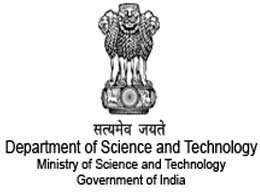
In the recent times, humankind’s understanding of the universe has grown by leaps as the technology used to explore the celestial world has dramatically improved. India too has devoted significant time and effort in contributing to the enhancement of our understanding of the universe. India has contributed to extending this wealth of knowledge by building observatories that create an entire new generation of astronomers through experiences that will define human interaction with space for decades to come.
 Below we give an overview of some of the Indian Institutions and observatories that continue to play a role in the international astronomy landscape:
Below we give an overview of some of the Indian Institutions and observatories that continue to play a role in the international astronomy landscape:
Indian Institute of Astrophysics(IIA)
- Funded by the Department of Science and Technology, Government of India, the Indian Institute of Astrophysics traces its origin to the Madras Observatory, later renamed as the Kodaikanal Observatory, it has been functioning as a full-fledged solar and stellar observatory. In its present form, the Indian Institute of Astrophysics was set up in 1971 as an autonomous research institution to conduct research in Astronomy, Astrophysics, and allied areas of Physics. The IIA is a research center devoted to research in astronomy, astrophysics, and related physics. The IIA operates many excellent experimental and observational facilities throughout India.
Udaipur Solar Observatory
- The Udaipur Solar Observatory is one of the best solar observing sites in Asia. Situated on an island in the Fateh Sagar Lake, this observatory is the perfect center to develop solar physics in India. Being surrounded by water, the island provides a favourable atmosphere for solar observations. As air turbulence is lesser on island then ground, sharp images of the sun can be acquired. The observatory is located in Rajasthan, which observes maximum number of cloudless days. All these factors add to quality of extracted images of the Sun. The observatory comprises a range of telescopes that provide excellent quality of solar observations.
Research Programmes at Udaupur Solar Observatory
- Global and Local Helioseismology
- Solar Magnetohydrodynamics (MHD)
- Multi-wavelength investigations of solar eruptive phenomena
- CMEs and their space weather consequences
- Solar Instrumentation
Facilities at Udaipur Solar Observatory
The Solar Optical Telescope: 50 cm aperture Multi-Application Solar Telescope (MAST), Global Oscillation Network Group (GONG) telescope
National Center for Radio Astrophysics
- The National Center for Radio Astrophysics (NCRA) is part of the Radio Astronomy Group of the Tata Institute of Fundamental Research (TIFR). The group was set up in the early 1960s to design and build the Ooty Radio Telescope. In the early 80’s a new telescope, the Giant Meterwave Radio Telescope (GMRT) was proposed, the chosen site for this telescope is close to Pune. NCRA has an active research program in many areas of Astronomy and Astrophysics, including studies of the Sun, interplanetary scintillations, pulsars, the Interstellar medium, active galaxies and cosmology. NCRA also provides exciting opportunities and challenges in engineering fields such as Analog and Digital Electronics, Signal Processing, Antenna Design, Communication and Software Development. The GMRT is one of the most challenging experimental programmes in basic sciences undertaken by Indian scientists and engineers.
ASTROSAT
- ASTROSAT is a multi-wavelength astronomy mission on an IRS-class satellite in a 650-km, near-equatorial orbit. It was launched by the Indian launch vehicle PSLV from Satish Dhawan Space Centre, Sriharikota on September 28, 2015. The expected operating life time of the satellite will be more than five years. ASTROSAT is the first dedicated Indian astronomy mission aimed at studying celestial sources in X-ray, optical and UV spectral bands simultaneously. The payloads cover the energy bands of Ultraviolet (Near and Far), limited optical and X-ray regime. One of the unique features of AstroSat mission is that it enables the simultaneous multi-wavelength observations of various astronomical objects with a single satellite. The scientific objectives of AstroSat mission are:
- To understand high energy processes in binary star systems containing neutron stars and black holes;
- Estimate magnetic fields of neutron stars;
- Study star birth regions and high energy processes in star systems lying beyond our galaxy;
- Detect new briefly bright X-ray sources in the sky;
- Perform a limited deep field survey of the Universe in the Ultraviolet region.
Aryabhatta Research Institute of observational sciencES (ARIES)
- Aryabhatta Research Institute of observational sciencES (ARIES) is one of the leading research Institutes specialising in observational Astronomy & Astrophysics and Atmospheric Sciences.
- Research interests of the ARIES Astronomy & Astrophysics division: Solar, planetary, stellar, galactic and extra-galactic astronomy including stellar variabilities, X-ray binaries, star clusters, nearby galaxies, quasars, and inherently transient events like supernovae and highly energetic gamma-ray bursts.
- The Institute hosts two telescopes of apertures 56-cm and 104-cm. There are two 15-cm telescopes dedicated for solar observations and a 104-cm optical telescope is used as a main observing facility.
Inter-University Centre for Astronomy and Astrophysics (IUCAA)
- The Inter-University Centre for Astronomy and Astrophysics (IUCAA) is an institution set up by the University Grants Commission (UGC) of India to promote the growth astronomy and astrophysics groups at Indian universities. The aim of the institution is to be a center of excellence in tertiary teaching, research and development in astronomy and astrophysics.
IUCAA Programmes Activities:– Core academic programmes– Visitor academic programmes
- IUCAA is host of the 2017 BRICS Astronomy workshop and working group meetings in PUNE, India.
Multilateral cooperative research
 The India Department of Science and Technology (DST) is part of the initiative to fund multilateral cooperative research activities amongst BRICS countries.
The India Department of Science and Technology (DST) is part of the initiative to fund multilateral cooperative research activities amongst BRICS countries.
-
Mission of the BRICS Astronomy Working Group
-
The mission of the BRICS Astronomy Working Group is to promote cooperation between BRICS member countries in the field of astronomy and enabling technologies through joint activities of government, universities, research institutions, and industry, as relevant, to develop astronomical sciences, generate new knowledge, train human capital, develop new technologies and applications, and improve public understanding of science.
